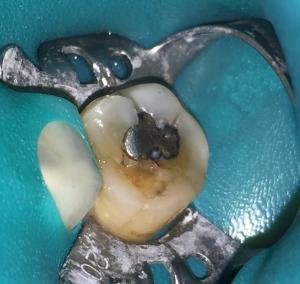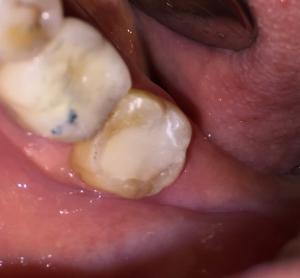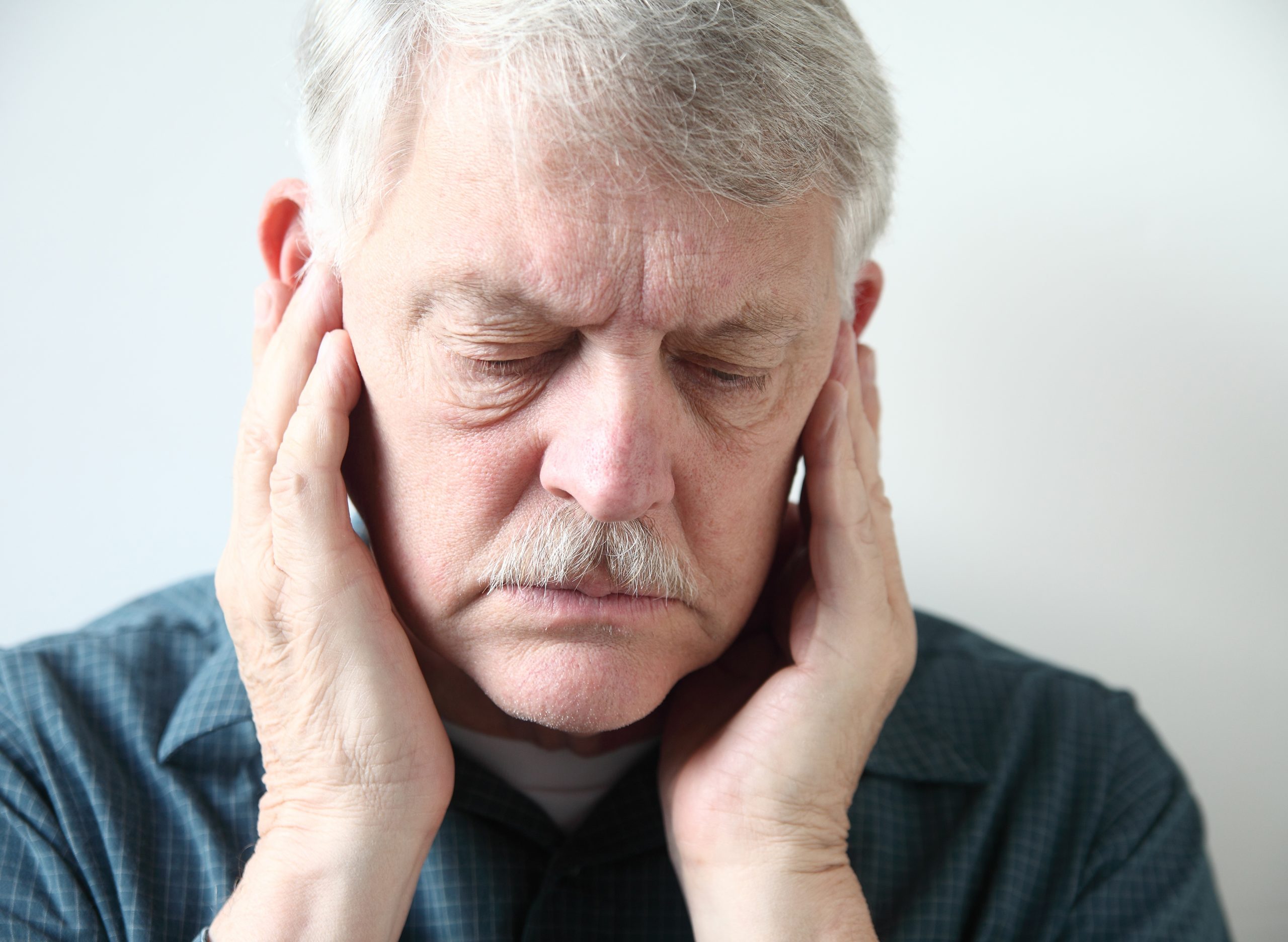What is TMJ/TMD? TMJ/TMD refers to a disorder of the chewing system including teeth, muscles and the jaw joint (Temporomandibular Joint). The disorder is caused by a misalignment between muscles, joint and upper and lower teeth. Common Symptoms include: Headaches- both migraine & sinus/pressure headaches Worn Teeth Cracked Teeth Fractured Teeth Loose/Sore Teeth Pain on […]
Category: TMJ
3 Ways Your Teeth Tell You Have a Sleep Disorder
1. If you Clench or Grind your teeth. When you do this act you actually spread the bones in your palate. This can increase your airway giving you more oxygen and increase the flow of blood to your brain which relaxes you. When we are under stress this is one way our body redirects blood flow for healing purposes. If you wear a night guard it should only be on the lower arch so that you get that release.

2. You have an enlarged tongue with scalloped edges. This indicates your jaws do not have enough space for your tongue and indicates your tongue is in the way of your airway. Usually this coexists with snoring.
3. You are having TMJ pain or issues such as your jaws are popping when you open. This usually indicates either your jaws are under developed and need to be expanded.
There are many other tells such as gum recession, snoring, and getting up multiple times at night. We recommend an exam that includes a digital CT and a take home sleep study. These items allow us to determine if a dental appliance is the right option and if so which one.
TMJ Treatment In Rockville, MD
TMJ Treatment
There are lots of simple home remedies for treating TMJ Pain: stretches, hot cloths, tongue exercises.
But if your jaw pain is bad enough that you’re considering a consultation with a dentist, we can possibly assume you’ve tried these remedies and need to consider a more serious approach.
The sources of TMJ Pain are facial muscles used for chewing, TMJ joint inflammation and teeth and gums getting too much pressure from Tooth Clenching. The cause of TMJ pain is the poor fit of the teeth top to bottom or what dentists call a bad bite. When teeth do not fit one another properly a patient needs to dislocate their TMJ joints to get their teeth to fit. The dislocation every time a patient chews, swallows, opens and closes causes muscles and TMJ joints to function in a poor position and causes neuromuscular pain and Tooth Clenching and Tooth Grinding and then more neuromuscular pain.
To solve or cure TMJ Pain it is necessary to correct a patients poor bite, so the patient will stop Tooth Clenching and Tooth Grinding. Some patients are not aware that they clench. Most of the time the Tooth Clenching happens at night.
Treating TMJ Pain at Natural Dentist Associates is done in two stages: 1) indirect treatment focusing mostly on reducing joint, muscle, gum and tooth inflammation. TMJ patients are treated by a TMJ Dentist with corrective bite Splint Therapy. Basically, records are taken to diagnose how the patients jaws and teeth are out of alignment. Subsequently, a corrective bite splint or Occlusal Splint is made to correct the misalignment. A splint looks a lot like a hard plastic mouth guard, but an Occlusal Splint actually has a corrective bite and cures the patients clenching problem. In severe cases Botox is used to medically calm down the muscles by injection of the drug into the tight chewing muscles. 2) once all the inflammation is better and the patient is asymptomatic, direct corrective treatment can be done to correct the patients bad bite. The correction depends on the patients problem. For example, a patients teeth may be in the wrong position and they may need to be orthodontically moved. The fit of the teeth may be poor and the patient may need bite adjustments and possibly some crowns and fillings redone. Occasionally, patients may have incompatible sized and shaped jaws top to bottom. In this latter case, surgery is the only true direct correction. Surgery is a serious decision and should not be taken lightly. Surgery should be the last resort and only performed when the symptoms are bad and there is a lot of dysfunction and all other options have been exhausted.
Increasingly, Botox is one treatment used by dentists and doctors in the treatment of acute severe TMJ Pain, Tooth Clenching and Tooth Grinding. It is important to note that Botox is an adjunctive treatment to actual corrective TMJ Therapy. Botox will have the effect of greatly reducing muscle tension, the patient feels less symptomatic and it is easier for the TMJ Dentist to diagnose and treat a TMJ patient. Botox will often lessen treatment time by shutting down muscle tension temporarily as the TMJ Dentist corrects the actual cause of TMJ Pain. From a biological standpoint, Botox impedes the body’s release of a neurotransmitter called acetylcholine in the areas where it is injected. Without the presence of this neurotransmitter, muscles in the area whereBotox is injected remain relaxed. Botox is more of a supportive therapy and not a corrective therapy.
Today, Botox is a household word best known, of course, for its aesthetic uses as a wrinkle relaxer, but it first caught on medically as a substance used to help people who had eye problems, particularly crossed eyes, or eye twitching.
A San Francisco-based ophthalmologist named Alan B. Scott realized in the 1960s that there could be medical uses for what we now call Botox. After testing the substance on cross-eyed monkeys for a decade or so, he received permission to test on humans in 1978.
Botox-using ophthalmologists noticed that the substance had one interesting side effect: Their patients were starting to look a little younger, because their wrinkles were disappearing after the treatment.
Since that time, Botox has also been used to treat everything from bladder spasms to excessive sweating. Lately, some Dentists have started stocking Botox as well. As it turns out, the same substance that can fix the problem of eye twitching can also be used, in many cases, to relax the jaw muscles that are at the root of TMJ pain.
Safe Amalgam Filling Removal in Bruxism and Tooth Grinding Cases
Safe Amalgam Filling Removal in Bruxism and Tooth Grinding Cases:
Amalgam Filling Removal in patients who Brux and Grind their teeth can be challenging cases. Tooth Wear or specifically wear of the enamel including cracking, chipping and abrading of the enamel will predispose teeth to decay and will prematurely break down existing filling materials. In the picture below, the yellow area adjacent to the Amalgam filling is where all of the white enamel has been worn away, exposing the underlying Dentin. The Amalgam Filling is also crumbling and separating from the tooth. All of this damage was caused by a TMJ problem. TMJ or TMD is defined as a misalignment between the best fit of the teeth and the path of closure of the jaw. The misalignment causes tooth clenching and grinding or Bruxism. TMJ or TMD problems can be diagnosed and cured by a specially trained TMJ Dentist.
In the case below, the Amalgam Filling containing Mercury Filling material was removed using the www.IAOMT.org safe amalgam filling material protocol. Additionally the TMJ problem was corrected with a Bite Adjustment and the exposed dentin was sealed (as was the original amalgam filling material) with a BPA-free tooth colored composite filling material.


What is TMJ? TMJ Diagnosis, Symptoms and Treatment
What is TMJ? TMJ Diagnosis, Symptoms and Treatment


